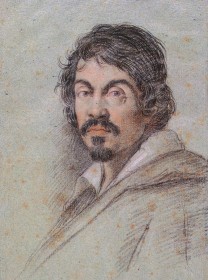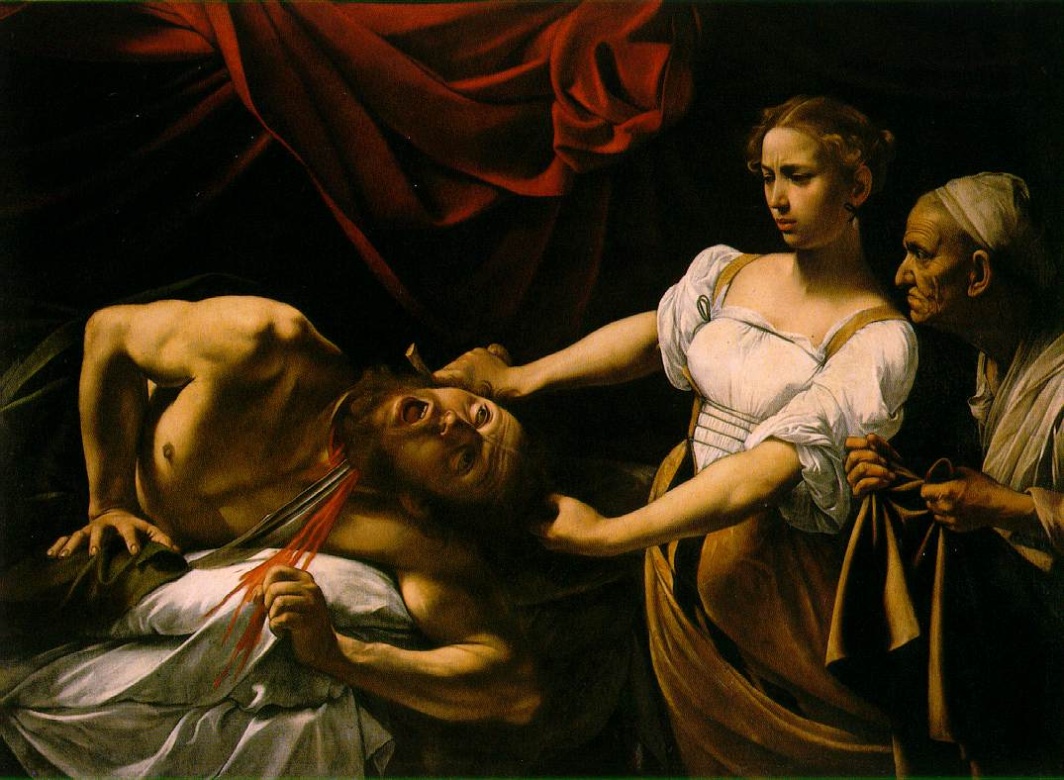Some of us have heard about him and some of us art-geeks know him very well for his unique style of Tenebrism (a sub-type of Chiaroscuro technic) in his paintings. He left his marks on the art of painting by his dark and violent representations of mythological incidents. Young artists of his era were already praising him as a god and his creations as miracles. And the influenced artists – who copied his style and methods – were called “Caravaggisti” or “Caravaggesque”. Reaching the peak of his fame, he was even nicknamed as the “Most Famous Painter of Rome”.
Every well-known artist led a similar life of training, roaming around the artistic cities to explore more about the art, gaining the skill, producing masterpieces and being so famous that if they lived today, you wouldn’t have to write addresses on the post-cards. At the end, die a proud death with so many peers and people to cry over.
But, Caravaggio’s fame and reputation overshadowed the less-known side of his life which, unfortunately, makes this outstanding artist’s personality smeary. But first of all, let’s begin with some knowledge of his early life and how he learned his ample skill.
 Born on 28th September, 1571, in Italy’s city Milan, Caravaggio’s full name was Michelangelo Merisi da Caravaggio. He was a child of Fermo Merisi and Lucia Aratori. In 1576, the family moved to a town called Caravaggio, due to the plague which devastated Milan.
Born on 28th September, 1571, in Italy’s city Milan, Caravaggio’s full name was Michelangelo Merisi da Caravaggio. He was a child of Fermo Merisi and Lucia Aratori. In 1576, the family moved to a town called Caravaggio, due to the plague which devastated Milan.
After becoming an orphan in 1584, the thirteen years old Caravaggio started four years apprenticeship to the Milanese painter Simone Peterzano, a pupil of another great artist Titian.
When the apprenticeship was over, it is speculated that he visited Venice and was introduced to the works of Giorgione, Titian, Leonardo da Vinci and an art called Lombard art. He was so influenced by them, that in later years he was accused by an Italian painter Federico Zuccari for copying Giorgione’s work. But, that could be a misleading statement as Caravaggio’s work style was unprecedented.
In mid-1592, Caravaggio reached Rome. His poor financial conditions made him to work in a factory-like workshop of Giuseppe Cesari who was Pope Clement VIII’s favorite artist. There he produced his first three major works Boy Peeling a Fruit, Boy with a Basket and Young Sick Bacchus. All of them far from the radical theme he acquired later.
Then after, The Fortune Teller and considered as his first masterpiece The Cardsharps were made, which established his foundation as an adept artist. He got a good reputation in the area and even attracted Cardinal Frenscesco Maria Del Monte. For them, he produced The Lute Player, Bacchus and Boy Bitten by a Lizard.
The next segment of his life brought him the nick-name of “The Most Famous Painter of the Rome”. Martyrdom of Saint Matthew, Calling of Saint Matthew and The Taking of Christ made him popular and sensational in his follower artist famous as “Caravaggisti”. Though, his paintings caught controversies as they portrayed people in more violent and dark ways. Here is an example called Judith Beheading Hologfernes:
Albeit, his painting ability was adored by everyone.
Before his death in 1610, he produced numerous art-works. Some other names of his masterpieces are David and Goliath, Narcissus, Sacrifice of Isaac, entombment, Death of A virgin and Nativity with St Francis and St Lawrence.
Now, the less-known side of his life.
In reality, Caravaggio was a temperamental person with swaggering habits. A very unlikely feature for an artist. Artists are considered to be calm, peaceful and focused. Caravaggio was none of them. Not when he wasn’t painting at least.
He was involved in numerous fights and brawls in his lifetime. Always ready for fights, in anger, he would throw plates at waiters. In that time when fights were a commonplace thing, the transcripts of his police records filled several pages. This radical mindset even got him jailed several times. Once he was arrested for hurling stones at the roman guards.
But his most unforgivable deed was the murder of a guy called Ranuccio Tomassoni. The reason of killing is various including a tennis game or Caravaggio’s affection towards Tomassoni’s wife. Reason is unclear but it brought Caravaggio under serious crime. This is the reason he left Milan and flew away to Naples with a price on his head. Though, he was saved because of his artistic fame and aristocratic contacts.
Maybe his lofty and aggressive nature gave his paintings the severe, intense and brutal aspect. His choice of the scenes from mythology was also filled with the same aggression.
His death could also be counted as an anecdote, as the reason is a mystery till date. Speculations say that he died because of a fever and some believes that one of his enemies killed him. According to The Guardian, the lead-poisoning from the paints was the reason of his early death at the age of 38.
We don’t know the exact end of him, but it did end another profound artist from renaissance era.

